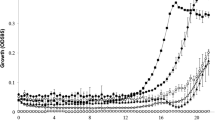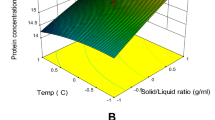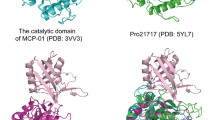Abstract
The last decade has witnessed a steady transition from the linear economic model to a restorative system that drives substantial and lasting improvements of the global resource productivity. In this scenario, the blue economy encompasses all industries and sectors related to oceans, seas and coasts. The blue economy model promotes a series of actions towards sustainability, which include minimization of food waste production through the re-utilization of the marine by-products. Within the food chain, the large amount of waste generated by the tuna fishery industry represents a rich pool of bioactive molecules, including polyunsaturated fatty acids, vitamins, amino acids (AAs) and peptides. Specifically, small- and medium-size peptides are emerging as a more convenient alternative to conventional antibiotic agents, against a variety of bacteria, fungi and viruses. This study focused on the retrieval of the protein fractions contained in the discards from the yellowfin tuna (Thunnus albacares) cannery industry. Protein hydrolysates obtained by enzymatic digestion were characterized by a peptidomic strategy based on reversed-phase ultra-high–pressure liquid chromatography followed by quadrupole-time-of-flight tandem mass spectrometry detection (data dependent analysis). A total of 196 AAs sequences were identified by matching MASCOT database, and their activity was predicted by support vector machine–based computational tools. As a result, significant antimicrobial scores were obtained for 22% of the identified peptides. Specifically, antibacterial, antifungal and antiviral properties were predicted based on compositional features (pseudo AA compositions and normalized AA compositions) and physicochemical properties (isoelectric point, hydrophobicity and net-charge).




Similar content being viewed by others
Data Availability
All data generated or analysed during this study are included in this published article and its supplementary information files.
References
Bahar AA, Ren D (2013) Antimicrobial peptides. Pharmaceuticals 6:1543–1575. https://doi.org/10.3390/ph6121543
Bose B, Downey T, Ramasubramanian AK, Anastasiu DC (2022) Identification of distinct characteristics of antibiofilm peptides and prospection of diverse sources for efficacious sequences. Front Microbiol 12:783284. https://doi.org/10.3389/fmicb.2021.783284
Büyükkiraz ME, Kesmen Z (2022) Antimicrobial peptides (AMPs): a promising class of antimicrobial compounds. J Appl Microbiol 132:1573–1596. https://doi.org/10.1111/jam.15314
Cai B, Chen H, Wan P, Luo L, Ye Z, Huang J, Chen D, Pan J (2022) Isolation and identification of immunomodulatory peptides from the protein hydrolysate of tuna trimmings (Thunnas albacares). LWT 164:113614. https://doi.org/10.1016/j.lwt.2022.113614
Capriotti AL, Cavaliere C, Foglia P, Piovesana S, Samperi R, Zenezini Chiozzi R, Laganà A (2015) Development of an analytical strategy for the identification of potential bioactive peptides generated by in vitro tryptic digestion of fish muscle proteins. Anal Bioanal Chem 407:845–854. https://doi.org/10.1007/s00216-014-8094-z
Cerrato A, Capriotti AL, Capuano F, Cavaliere C, Montone AMI, Montone CM, Piovesana S, Zenezini Chiozzi R, Laganà A (2020) Identification and antimicrobial activity of medium-sized and short peptides from yellowfin tuna (Thunnus albacares) simulated gastrointestinal digestion. Foods 9:1185. https://doi.org/10.3390/foods9091185
Cerrato A, Aita SE, Cavaliere C, Laganà A, Montone CM, Piovesana S, Zenezini Chiozzi R, Capriotti AL (2021) Comprehensive identification of native medium-sized and short bioactive peptides in sea bass muscle. Food Chem 343:128443. https://doi.org/10.1016/j.foodchem.2020.128443
Coppola D, Lauritano C, Palma Esposito F, Riccio G, Rizzo C, De Pascale D (2021) Fish waste: from problem to valuable resource. Mar Drugs 19:116. https://doi.org/10.3390/md19020116
Cutajar N, Lia F, Deidun A, Galdies J, Arizza V, Zammit Mangion M (2022) Turning waste into a resource: isolation and characterization of high-quality collagen and oils from Atlantic Bluefin Tuna Discards. Appl Sci 12:1542. https://doi.org/10.3390/app12031542
Di Vaio A, Hasan S, Palladino R, Hassan R (2023) The transition towards circular economy and waste within accounting and accountability models: a systematic literature review and conceptual framework. Environ Dev Sustain 25:734–810. https://doi.org/10.1007/s10668-021-02078-5
Donato P, Dugo P, Cacciola F, Dugo G, Mondello L (2009) High peak capacity separation of peptides through the serial connection of LC shell-packed columns. J Sep Sci 32:1129–1136. https://doi.org/10.1002/jssc.200800639
Donato P, Cacciola F, Sommella E, Fanali C, Dugo L, Dachà M, Campiglia P, Novellino E, Dugo P, Mondello L (2011a) Online comprehensive RPLC × RPLC with mass spectrometry detection for the analysis of proteome samples. Anal Chem 83:2485–2491. https://doi.org/10.1021/ac102656b
Donato P, Cacciola F, Mondello L, Dugo P (2011b) Comprehensive chromatographic separations in proteomics. J Chromatogr A 1218:8777–8790. https://doi.org/10.1016/j.chroma.2011.05.070
Donnarumma D, La Tella R, Vento F, Salerno TMG, Micalizzi G, Rigano F, Mondello L (2021) Evaluation of the level of toxic contaminants and essential molecules in the context of the re-use of tuna fishery industry by-productS. Food Anal Methods 14:2161–2174. https://doi.org/10.1007/s12161-021-02045-w
Dupree EJ, Jayathirtha M, Yorkey H, Mihasan M, Petre BA, Darie CC (2020) A critical review of bottom-up proteomics: the good, the bad, and the future of this field. Proteomes 8:14. https://doi.org/10.3390/proteomes8030014
Esposito M, Tse T, Soufani K (2018) Introducing a circular economy: new thinking with new managerial and policy implications. Calif Manag Rev 60:5–19. https://doi.org/10.1177/0008125618764691
European Commission, Directorate-General for Environment (2020) Investing in the circular economy: a blueprint for a green recovery. Publications Office. https://doi.org/10.2779/48431
Fadeeva Z, Van Berkel R (2023) Towards circular economy of food systems: an explorative appraisal of opportunities in fish, seafood value chains. In: Narula SA, Raj SP (eds) Sustainable Food Value Chain Development. Springer, Singapore. https://doi.org/10.1007/978-981-19-6454-1_4
FAO (2022) The state of world fisheries and aquaculture 2022. Towards Blue Transformation. FAO, Rome. https://doi.org/10.4060/cc0461en
Giromini C, Cheli F, Rebucci R, Baldi A (2019) Invited review: dairy proteins and bioactive peptides: Modeling digestion and the intestinal barrier. J Dairy Sci 102:929–942. https://doi.org/10.3168/jds.2018-15163
Halim NRA, Yusof HM, Sarbon NM (2016) Functional and bioactive properties of fish protein hydolysates and peptides: a comprehensive review. Trends Food Sci Technol 51:24–33. https://doi.org/10.1016/j.tifs.2016.02.007
Huan J, Kong Q, Mou H, Yi H (2020) Antimicrobial peptides: classification, design, application and research progress in multiple fields. Front Microbiol 11:582779. https://doi.org/10.3389/fmicb.2020.582779
Kyte J, Doolittle RF (1982) A simple method for displaying the hydropathic character of a protein. JMB 157:105–132. https://doi.org/10.1016/0022-2836(82)90515-0
Mahlapuu M, Björn C, Ekblom J (2020) Antimicrobial peptides as therapeutic agents: opportunities and challenges. Crit Rev Biotechnol 40:978–992. https://doi.org/10.1080/07388551.2020.1796576
Martínez-Vázquez RM, Milán-García J, de Pablo VJ (2021) Challenges of the blue economy: evidence and research trends. Environ Sci Eur 33:61. https://doi.org/10.1186/s12302-021-00502-1
Meher PK, Sahu TK, Saini V, Rao AR (2017) Predicting antimicrobial peptides with improved accuracy by incorporating the compositional, physico-chemical and structural features into Chou’s general PseAAC. Sci Rep 7:42362. https://doi.org/10.1038/srep42362
Mondello L, Donato P, Cacciola F, Fanali C, Dugo P (2010) RP-LC × RP-LC analysis of a tryptic digest using a combination of totally porous and partially porous stationary phases. J Sep Sci 33:1454–1461. https://doi.org/10.1002/jssc.200900816
Morseletto P (2020) Targets for a circular economy. Resour Conserv Recycl 153:104553. https://doi.org/10.1016/j.resconrec.2019.104553
Neubauer D, Jaśkiewicz M, Migoń D, Bauer M, Sikora K, Sikorska E, Kamysz E, Kamysz W (2017) Retro analog concept: comparative study on physico-chemical and biological properties of selected antimicrobial peptides. Amino Acids 49:1755–1771. https://doi.org/10.1007/s00726-017-2473-7
Piovesana S, Capriotti AL, Caruso G, Cavaliere C, La Barbera G, Zenezini Chiozzi R, Laganà A (2016) Labeling and label free shotgun proteomics approaches to characterize muscle tissue from farmed and wild gilthead sea bream (Sparus aurata). J Chromatogr A 1428:193–201. https://doi.org/10.1016/j.chroma.2015.07.049
Pirtskhalava M, Vishnepolsky B, Grigolava M, Managadze G (2021) Physicochemical features and peculiarities of interaction of AMP with the membrane. Pharmaceuticals 14:471. https://doi.org/10.3390/ph14050471
Rigano F, Arena P, Mangraviti D, Donnarumma D, Dugo P, Donato P, Mondello L, Micalizzi G (2021) Identification of high-value generating molecules from the wastes of tuna fishery industry by liquid chromatography and gas chromatography hyphenated techniques with automated sample preparation. J Sep Sci 44:1571–1580. https://doi.org/10.1002/jssc.202100108
Shaviklo AR, Rezapanah S, Motamedzadegan A, Damavandi-Kamali N, Mozafari H (2017) Optimum conditions for protein extraction from tuna processing by-products using isoelectric solubilization and precipitation processes. Iran. J Fish Sci 16:774–792
Talapko J, Meštrović T, Juzbašić M, Tomas M, Erić S, Horvat Aleksijević L, Bekić S, Schwarz D, Matić S, Neuberg M, Škrlec I (2022) Antimicrobial peptides—mechanisms of action, antimicrobial effects and clinical applications. Antibiotics 11:1417. https://doi.org/10.3390/antibiotics11101417
Thakur A, Sharma A, Alajangi HK, Jaiswal PK, Lim Y, Singh G, Barnwal RP (2022) In pursuit of next-generation therapeutics: antimicrobial peptides against superbugs, their sources, mechanism of action, nanotechnology-based delivery, and clinical applications. Int J Biol Macromol 2018:135–156. https://doi.org/10.1016/j.ijbiomac.2022.07.103
Valero Y, Saraiva-Fraga M, Costas B, Guardiola FA (2020) Antimicrobial peptides from fish: beyond the fight against pathogens. Rev Aquac 12:224–253. https://doi.org/10.1111/raq.12314
Vierros M, De Fontaubert C (2017) The potential of the blue economy: increasing long-term benefits of the sustainable use of marine resources for small island developing states and coastal least developed countries. World Bank Group, Washington, D.C. https://documents.worldbank.org/curated/en/523151496389684076/The-potential-of-the-blue-economy-increasing-long-term-benefits-of-the-sustainable-use-of-marine-resources-for-small-island-developing-states-and-coastal-least-developed-countries
Wan P, Cai B, Chen H, Chen D, Zhao X, Yuan H, Huang J, Chen X, Luo L, Pan J (2023) Antidiabetic effects of protein hydrolysates from Trachinotus ovatus and identification and screening of peptides with α-amylase and DPP-IV inhibitory activities. Curr Res Food Sci 6:100446. https://doi.org/10.1016/j.crfs.2023.100446
Xie J, Zhao Q, Li S, Yan Z, Li J, Li Y, Mou L, Zhang B, Yang W, Miao X, Jiang X, Wang R (2017) Novel antimicrobial peptide CPF-C1 analogs with superior stabilities and activities against multidrug-resistant bacteria. Chem Biol Drug Des 90:690–702. https://doi.org/10.1111/cbdd.12988
Yaghoubzadeh Z, Peyravii Ghadikolaii F, Kaboosi H, Safari R, Fattahi E (2020) Antioxidant activity and anticancer effect of bioactive peptides from rainbow trout (Oncorhynchus mykiss) skin hydrolysate. Int J Pept Res Ther 26:625–632. https://doi.org/10.1007/s10989-019-09869-5
Yathisha UG, Bhat I, Karunasagar I, Mamatha BS (2019) Antihypertensive activity of fish protein hydrolysates and its peptides. Crit Rev Food Sci Nutr 59:2363–2374. https://doi.org/10.1080/10408398.2018.1452182
Acknowledgements
The authors gratefully acknowledge the continuous support from Waters and Merck Life Science.
Funding
This study was supported by Bando “HORIZON 2020” PON I&C 2014–2020, project number F/050347/01–03/X32.
Author information
Authors and Affiliations
Contributions
T.M.G.: data curation, formal analysis, investigation, writing — original draft; C.C.: data curation, investigation, visualization, writing — original draft; P.A.: data curation, investigation, visualization; A.A.: data curation, writing — original draft; A.C.: data curation, formal analysis; A.L.C.: data curation, formal analysis; F.R.: conceptualization, writing — review and editing; P.D.: conceptualization, data curation, writing — review and editing; A.M.: data curation, investigation, visualization; L.M.: funding resources, project administration, supervision.
Corresponding author
Ethics declarations
Ethical Standards
This article does not contain any studies with human participants or animals performed by any of the authors.
Informed Consent
Not applicable.
Conflict of Interest
Tania Maria Grazia Salerno declares that she has no conflict of interest. Carmelo Coppolino declares that he has no conflict of interest. Paola Arena declares that she has no conflict of interest. Ahmed Aichouni declares that he has no conflict of interest. Andrea Cerrato declares that he has no conflict of interest. Anna Laura Capriotti declares that she has no conflict of interest. Francesca Rigano declares that she has no conflict of interest. Danilo Donnarumma declares that he has no conflict of interest. Paola Donato declares that she has no conflict of interest. Alice Mondello declares that she has no conflict of interest. Luigi Mondello declares that he has no conflict of interest.
Additional information
Publisher’s Note
Springer Nature remains neutral with regard to jurisdictional claims in published maps and institutional affiliations.
Supplementary Information
ESM 1
(DOCX 99 kb)
Rights and permissions
Springer Nature or its licensor (e.g. a society or other partner) holds exclusive rights to this article under a publishing agreement with the author(s) or other rightsholder(s); author self-archiving of the accepted manuscript version of this article is solely governed by the terms of such publishing agreement and applicable law.
About this article
Cite this article
Salerno, T.M.G., Coppolino, C., Arena, P. et al. Circular Economy in the Food Chain: Retrieval and Characterization of Antimicrobial Peptides from Fish Waste Hydrolysates. Food Anal. Methods 17, 178–199 (2024). https://doi.org/10.1007/s12161-023-02543-z
Received:
Accepted:
Published:
Issue Date:
DOI: https://doi.org/10.1007/s12161-023-02543-z




